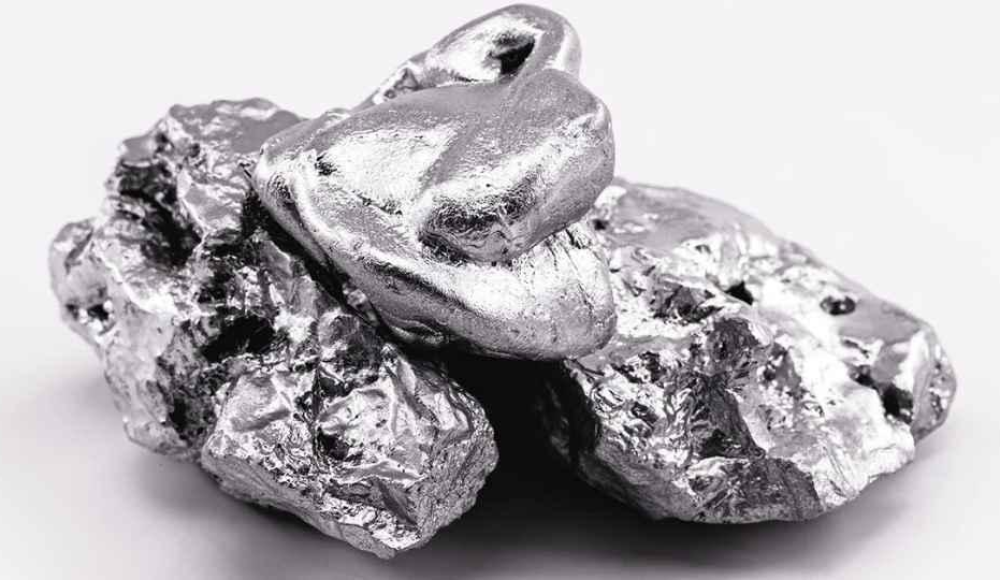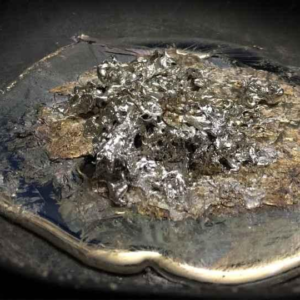ニッケルはわずかに磁性を持っています, 純粋な磁性ではない. 室温では強磁性体です, つまり磁化できるということです. When nickel is heated beyond a certain point, it loses its magnetic property. Nickel and iron are both attracted to magnets. しかし, nickel is less likely to be attracted than iron or cobalt. Let’s explore nickel magnetism behavior in this guide.
Is Nickel Magnetic or Non-Magnetic?
Nickel is weakly magnetic, or ferromagnetic at 25 C. しかし, its magnetic property decreases when it is exposed to high temperatures. Nickel can also become magnetized itself.
What Makes Nickel Magnetic?
The magnetism of nickel is caused by its element atomic structure. Magnetic moments are produced in Nickel due to the presence of unpaired electrons. These electrons come in order and create a magnetic field.
Nickel also proved to be ferromagnetic so magnetic interactions are fairly possible. It strengthens its magnetism by the alignment of atoms in it. 一般的に, Iron has a higher level of magnetization than Nickel.
Nickel Metal vs. Ferromagnetism: A Comparison
Nickel is a ferromagnetic metal. あ ferromagnetic material is a state where all magnetic moments of atoms are oriented. In nickel, the free electrons in the d-orbitals produce a magnetic field. There are unpaired electrons. The direction of unique magnetic moments in the solid gives nickel its magnetic properties.
加えて, nickel is unique in its property to remain ferromagnetic at the ambient temperature, 他の素材とは異なり. しかし, コバルトや鉄のような磁石にあまり惹かれていません. したがって, ニッケルが加熱されるとき, 電子構造が破壊されると、それは非メロマグネティックになります. しかし, わずかまたは中程度の磁気の特徴のため、まださまざまな磁気アプリケーションでその用途を見つけています.
Factors Affecting Magnetic Properties of Nickel
ニッケルの磁気特性に影響を与える一般的な要因:
温度
ニッケルの磁気特性は温度に大きく依存します. より高い温度で, 熱運動により、電子がランダムに回転するようになります. これにより、化合物の強磁性特性が弱まります. キュリーの温度を超えて加熱されると合金が非磁性になります (358 摂氏). キュリーポイントのニッケルは常磁性素材です. 電子が互いに位相にならない場所.
結晶構造
ニッケルの磁気は、その顔中心の立方体の影響を受けます (FCC) 結晶構造. The structure of nickel facilitates the spin alignment of the electrons and hence ferromagnetic characteristics. The local spin movement in a material is sensitive to any changes in the crystal structure due to mechanical stress or alloying of the material.
Impurities and Alloying Elements
The magnetic qualities of nickel can be controlled by the addition of foreign particles. These foreign atoms destroy the coordinate alignment of electrons concerning their spin. さらに, 場合によっては, as the impurity increases the magnetization of the nickel can increase and decrease vice versa. 例えば, iron magically increases magnetism while adding elements such as copper is likely to lessen magnetism.
Grain Size
As the grain size of nickel is concerned, these grains possess some magnetic characteristics. Smaller grains provide more domain boundaries within the material. This leads to increased surface area which in turn causes the material to respond to magnetic fields. 一方で, the larger grain size decreases the possibility of mutual orientation of magnetic domains, thus decreasing the overall magnetic cohesiveness.
External Magnetic Fields
Preliminary research has dictated that manipulation of external magnetic fields can affect the orientation of the magnetic domains in nickel. These domains realign with the applied magnetic field, increasing the material’s magnetization. さらに, the degree of alignment depends on the strength of the applied magnetic field. If the field is powerful enough, saturation magnetization is achieved, which means that all domains are aligned.
プレッシャー
Pressure applied to nickel changes its atomic structure and magnetic properties. It changes the interatomic distance and alters the electron states in nickel. 加えて, Pressure affects the number of electron orbitals. Changing the orbitals can alter the material’s magnetic properties. The nickel exhibits ferromagnetic behavior and in fact, this can either be strengthened or weakened based on the electronic structure changes.
Nickel Curie Point or Curie Temperature
Curie temperature is defined as a temperature at which nickel becomes nonferromagnetic. It is approximately 358 摂氏 (675, 928 華氏). At curie temperature, nickel undergoes a ferromagnetic to paramagnetic state change.
In the ferromagnetic state with the orientation of electron spins, and has strong magnetic properties. それにもかかわらず, whenever the temperature rises then thermal energy destroys this alignment, and the magnetism decreases. The atomic magnetic moments are not constrained to remain aligned. さらに, 外部磁場が適用されないと、キュリー温度より下で材料が弱く磁気になります.
What are the Machining Techniques For Nickel?
- CNCフライス加工
- CNC旋削加工
- CNC穴あけ加工
- CNC研削
- 電解加工
- 放電加工 (放電加工)
- CNCレーザー切断
- CNCウォータージェット切断
- アブレイシブジェット加工
Applications of Nickel Due to Its Magnetic Properties
ニッケルの典型的なアプリケーションは次のとおりです:
永久磁石
メーカーはニッケルに鉄を追加して、永久磁石の合金を作成します. これらの磁石は、常に磁場で永続的です, 長期使用アプリケーションに最適です. これらは電気モーターです, 磁気ストレージデバイス, およびセンサー.
Magnetic Shielding
ニッケルには、磁場にシールドまたはカウンターに反する特性があります. 化合物は、トランスを含む電子デバイスの磁気シールドに特に適用されます, モーターとMRI機器. ニッケルは、主に外部磁場からの干渉を最小限に抑えます. さらに, 精度とデバイスの信頼性を高めます.
Data Storage Technology
ニッケルベースの薄膜は、データストレージアプリケーションで重要な役割を果たします, ハードディスクドライブなど. These films store data by controlling and freezing magnetic domains. This capability is required for storage provided in high-speed, and capacity, which is mandatory for today’s computing.
Magnetic Sensors
The nickel alloys are used universally in magnetic sensors in every application, automotive and industrial. These sensors measure motion, space, and position based on the magnetoresistive effect by which resistance varies with magnetic fields.
Electric Motors
Nickel has good magnetic properties that qualify it for the production of electric motors. These alloys offer high magnetization capacity. 加えて, the efficacy of motors is being used in robotic systems, electric cars, and home appliances among others.
トランスとインダクター
In electrical transformers and inductors, nickel is applied because of its capability to improve magnetic flux. Nickel-based alloys are applied to transformer cores to increase transformer efficiency due to lower energy loss. さらに, it guarantees the reliability of power transmission, especially at high frequencies.
技術的なよくある質問
Q1. How does temperature affect the magnetic properties of nickel?
As temperature increases, nickel’s magnetic properties weaken. Beyond its Curie temperature of approximately 358°C, nickel transitions from ferromagnetic to paramagnetic, losing its ability to retain magnetism.
第2四半期. Can nickel be used to create permanent magnets?
はい, when nickel is alloyed with other materials such as iron, nickel is used to create strong permanent magnets that retain magnetism over time and are employed in motors, センサー, and data storage devices.
Q3. What is the Curie temperature of nickel?
The Curie temperature of nickel is around 358°C. この温度では, nickel loses its ferromagnetic properties and becomes paramagnetic. Meaning it can no longer maintain magnetic alignment without an external magnetic field.
Q4. How does nickel contribute to magnetic shielding?
Nickel’s ferromagnetic properties allow it to redirect magnetic fields. It makes it an effective material for shielding sensitive electronic devices from external magnetic interference, such as in MRI machines and transformers.
Q5. What role does nickel play in data storage technology?
Nickel-based alloys are used in hard disk drives, where their magnetic properties allow for the stable storage and retrieval of data. The manipulation of magnetic domains in nickel films enables high-capacity, reliable data storage.
結論
Nickel’s magnetic properties are essential in various applications, from permanent magnets to magnetic shielding. Its ability to retain magnetism and interact with magnetic fields makes it valuable in electronics, モーター, and data storage. 技術が進むにつれて, nickel’s role in performance enhancements and efficiency remains crucial. お問い合わせ 詳細については.



